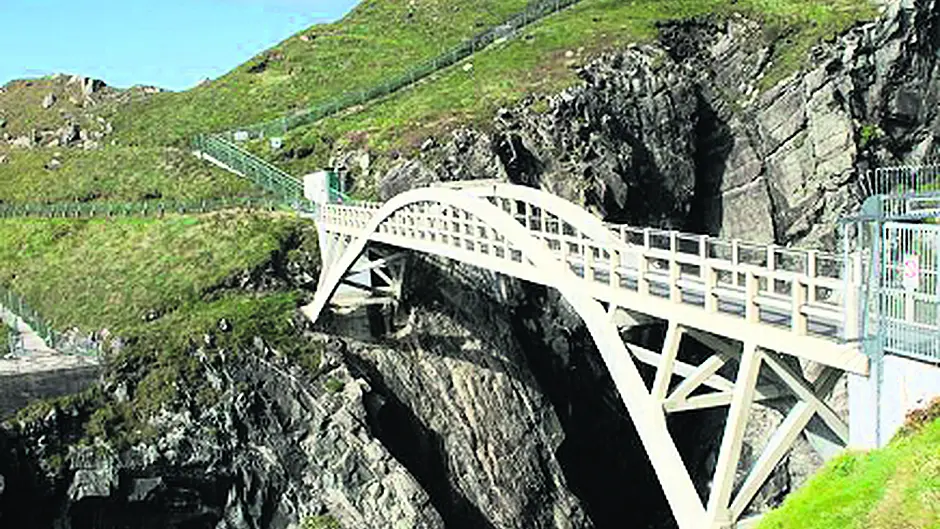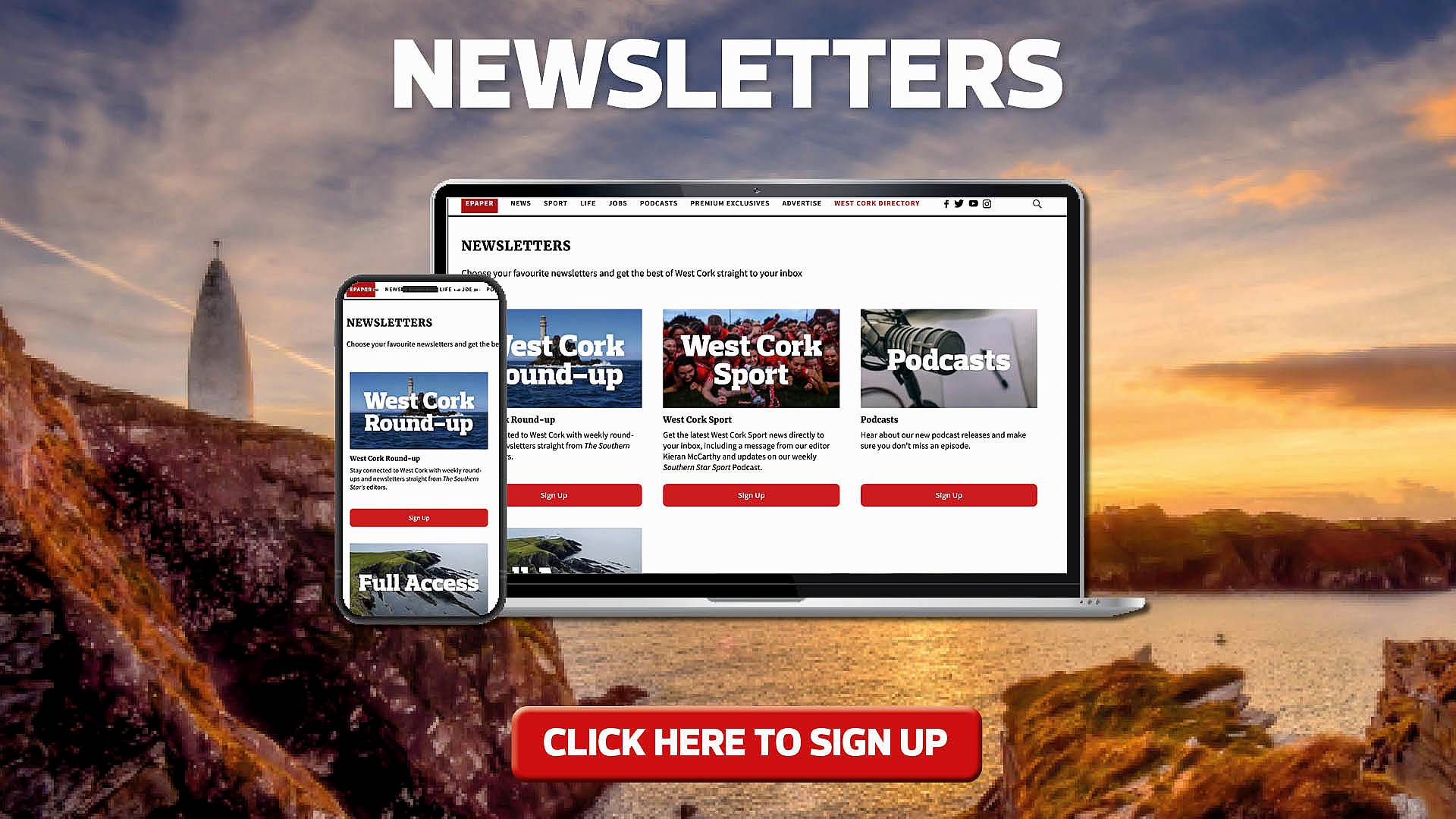A major report into the future of tourism in Cork city and county was launched recently. Siobhan Cronin takes an indepth look at its conclusions and suggstions for the future
THE recently-launched new tourism strategy for Cork will promote the county as ‘Ireland’s Maritime Paradise’ and use local celebrities as ambassadors for the region.
The Cork Strategic Tourism Task Force, which includes representatives from City and County Councils, local industry, Fáilte Ireland and Tourism Ireland, unveiled its 49-page report into its vision for Cork, at a reception a fortnight ago.
It says it will target three visitor segments – described as the ‘culturally curious’, the ‘social energisers’, and the ‘great escapers’.
While it makes little reference to West Cork in particular, it does mention artisan produce, outdoor activities and unique visitor experiences as being key to attracting more tourists – all elements which West Cork has in abundance.
The report ‘Growing Tourism in Cork – A Collective Strategy’ says that ‘at present Cork is not fully appreciated … for all it has to offer’ as some visitors have an ‘outdated view’ of the product.
The Task Force says it is ‘working to put Cork back on the map as a destination brand’.
The chairman of the Task Force is Ger O’Mahony, a partner at PricewaterhouseCoopers, who says the ‘Maritime Paradise’ is a good moniker for the county, given its ‘significant maritime history’.
Without making any reference to the significant proposed cuts to LEADER funding, the report says it is ‘essential that LEADER funding and other funding is significantly influenced by the tourism strategy.’
While Cork currently attracts 17.5% of all visitors to Ireland, and is second only to Dublin in terms of bed nights, there is still significant potential to be tapped, the authors believe.
For example, it is the only county that has both the Wild Atlantic Way and the Ancient East within its boundary.
Access to the county is, of course, integral to attracting more visitors, and Cork Airport is recognised ‘as a potential growth platform for inbound traffic.
A National Aviation Policy for Ireland specifically identifies the unique position of Cork Airport as a ‘gateway’ to each of the two main tourism policy propositions – Ireland’s Ancient East and the Wild Atlantic Way – and recognises that Cork Airport offers a significant advantage to the region and as a potential hub for visitors coming to Ireland.’
The new trends in tourism are ideal for Cork – as it describes the popularity of community-based exploration and unique visitor experiences. ‘Instead of buying a vase, they want to learn how to make one,’ it says.
This desire can be translated into anything from cooking, to dancing, sports, and wellness.
‘The sense of adventure needs to be dialled up, together with a sense of cool,’ it advises. Cork’s personality is ‘quirky’ it adds.
Referring to research on visitors to Cork, the report says that Cork does not feature on international tourists’ radar – ‘It currently has no iconic experiences beyond the Blarney Stone. Visitors to Fota Island are less inclined to visit the rest of Cork.’
Bizarrely, it makes no mention of West Cork’s biggest attraction – the Mizen visitor experience. However, the Mizen bridge does feature – uncredited – in a photograph on the first and last pages.
‘For domestic visitors,’ it says, ‘Cork is synonymous with West Cork, which holds nostalgic memories of their own childhood-family holidays.’
There is little other mention of West Cork in the report.
The authors set out an action plan to deliver visitor growth, increased brand awareness and bed nights.
In a call-out to local tourism businesses, the report says more visitor experiences need to be identified to justify the ‘Maritime Paradise’ moniker. The city should be developed into the ‘primary destination gateway for the Wild Atlantic Way’ – a proposition that may raise a few eyebrows in Kinsale, which has already adopted that accolade.
It suggests more festivals and events should be created to help extend the visitor season, and that existing activities should be ‘reframed’ to fit in with the Maritime Paradise concept.
Cruise tourism is also mentioned, although Glengarriff/Bantry’s plans to tap into this market are not highlighted. Instead, it says activities should be packaged in order to avail of this market.
All relevant stakeholders must be ‘brought on board’ with the plan to ensure its success, it says, adding that ‘celebrity ambassadors’ should be used for ‘overseas leverage as well as destination ambassadors’.
With possible reference to the likes of Graham Norton or Cillian Murphy, it says: ‘A plan to create a number of designated ambassadors for the tourism proposition must be considered – this will include diaspora celebrities as well as local ambassadors.’
Plans for a web portal are also included – to be developed this year – bringing all destination and activity information into one central point under the Visit Cork brand.
Transport opportunities and gaps in the market should also be identified and ‘solutions’ found where possible, it suggests.
The Task Force should also ‘work progressively with Cork Airport to develop new routes and increase visitor numbers’.
It what could be a reference to hostel, college and Air B ‘n’ B-type options, the report refers to the creation of ‘good value accommodation’ and ‘sharing economy accommodation’, as well as ‘facilitated hosting’ and ‘campus accommodation’.
In order to implement the report’s proposals, it suggests the creation of at least two full-time jobs to oversee the Visit Cork initiative: a Tourism Destination Manager and a Tourism Marketing Manager with ‘supporting administration staff as required’.
The Advisory Group for the report included several West Cork representatives, including Siobhan Burke of the Sheep’s Head Way, Jackie Dawson of Kinsale Chamber of Commerce, Jim Kennedy of Atlantic Sea Kayaking, Ian Dempsey of the West Cork Development Partnership, Eileen O’Shea of Bantry Tourism, John Walsh of West Cork Islands and Michael O’Neill of the Fernhill House Hotel in Clonakilty.
The report also pointed out that other towns that have adopted successful tourism strategies, which were examined by the authors, include Santiago, Yorkshire, Cornwall, Manchester and Portland.








